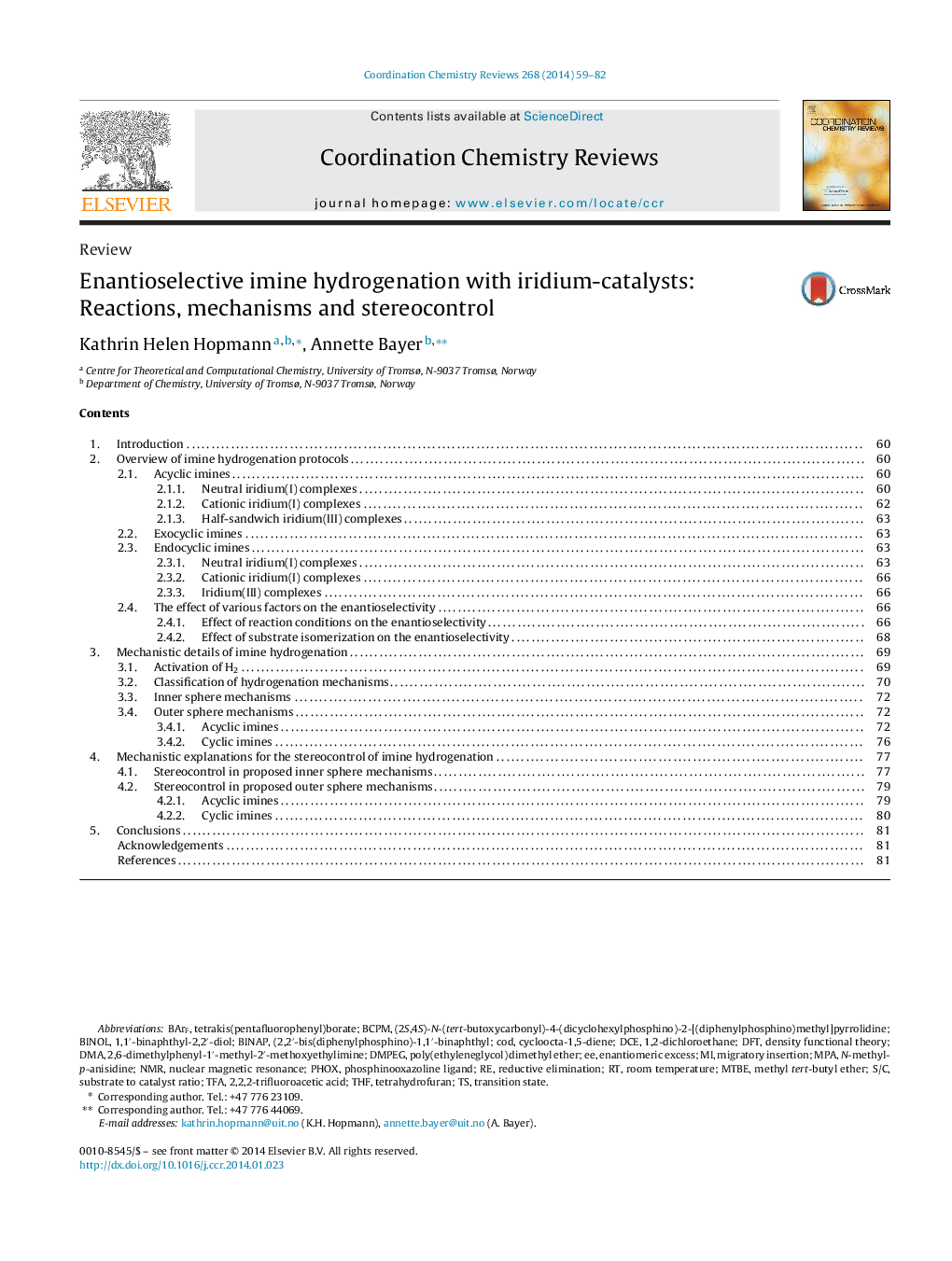| Article ID | Journal | Published Year | Pages | File Type |
|---|---|---|---|---|
| 1300995 | Coordination Chemistry Reviews | 2014 | 24 Pages |
•Asymmetric iridium-catalyzed direct imine hydrogenation is reviewed.•Most interesting catalyst systems for acyclic and cyclic imines are summarized.•Influence of reaction conditions on enantioselectivity is discussed.•Proposed hydrogenation mechanisms are classified and evaluated in detail.•Hypotheses for the stereocontrol of hydrogenation are discussed.
This review summarizes the current status of knowledge on asymmetric iridium-catalyzed direct hydrogenations of acyclic and cyclic imines. An overview of the most interesting catalysts with respect to selectivity, activity and substrate scope is given, including a discussion of the effects of different reaction conditions on the enantioselectivity of imine reduction. A detailed analysis of proposed imine hydrogenation mechanisms is presented, revealing that a significant number of recent proposals suggest outer sphere mechanisms, implying that the substrate does not bind to the metal centre during the hydrogenation reaction. An intriguing question is how a high enantioselectivity can be achieved in such systems. Generally, the factors governing the stereocontrol of iridium-catalyzed direct imine hydrogenation are little studied. The mechanistic proposals that have been put forward to explain the enantiodiscrimination of selected complexes are reviewed here, showing that the stereocontrol appears to be governed by weak non-bonding interactions between the substrate and the chiral catalyst complex. These selectivity-determining interactions might be modified through coordination of solvent, additive, or product molecules to the iridium complex, providing a rationale for the effect of solvent or additives on the enantioselectivity.
Graphical abstractFigure optionsDownload full-size imageDownload high-quality image (222 K)Download as PowerPoint slide
